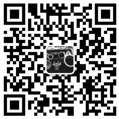"Thread rod" usually refers to "threaded rod" or "full thread stud". Here is a detailed introduction about it:
- **Features**
- **Full thread design**: Threaded rod has continuous threads from one end to the other. This design makes it more flexible and reliable when connecting and fixing parts. It can be used with nuts, washers, etc. to achieve fastening connections between different parts.
- **Multiple lengths and diameters available**: Threaded rods have a variety of lengths and diameters, which can be selected according to specific usage requirements. Common lengths include 3 feet, 6 feet, 10 feet and 12 feet, etc., and can also be cut into specific lengths as required; diameters range from smaller sizes to larger sizes to accommodate different load capacities and application scenarios.
- **Manufacturing method**
- **mass-produced**: That is, mass production, for common grades and diameters of threaded rods, through large-scale production processes to meet the large market demand, the threaded rods produced in this way are relatively low in cost and widely available.
- **cut-to-length**: Cut to length, first mass-produce longer threaded rods, then cut them according to the specific length required by the customer, and chamfer both ends to meet the precise requirements of threaded rod length in different projects.
- **cut thread**: For some special grades of steel, since mass production is not possible, the steel needs to be cut into billets slightly longer than the final length, then fully threaded, and finally cut to the final length and chamfer both ends.
- **Material and grade**
- **ASTM A307**: It is an ordinary low-carbon steel material, economical and affordable, and is often used for general-purpose connections where strength requirements are not high.
- **ASTM A193 Grade B7**: It is a high-strength chromium-molybdenum alloy steel. After quenching and tempering, it has high strength and good corrosion resistance. It is widely used in high-temperature, high-pressure and other occasions with high requirements for fastener performance, such as pipe flange connections.
- **ASTM F1554 Grade 55/105**: Grade 55 has a low to medium carbon content and a yield strength of 55 ksi. It is mainly used for applications such as anchor bolts. Grade 105 is made of heat-treated alloy steel, quenched and tempered, and is usually used to anchor structural supports to concrete foundations.
- **Stainless steel materials**: Such as 304 stainless steel and 316 stainless steel, which have excellent corrosion resistance and are suitable for harsh environments such as moisture, acid and alkali corrosion. 316 stainless steel has better corrosion resistance than 304 stainless steel, especially in more corrosive environments such as near seawater.
- **Surface treatment**
- **Plain steel**: It is the original steel without any surface treatment, which maintains the original color of the steel and has a certain strength, but poor corrosion resistance. It is usually used indoors or in environments where corrosion resistance is not required.
- **Hot-dip galvanized**: By immersing the threaded rod in hot zinc liquid, a thick layer of zinc is formed on its surface, which can effectively prevent the steel from rusting and corrosion. It is suitable for outdoor or humid environments where corrosion is prone to occur.
- **Zinc plated**: A layer of zinc is plated on the surface of the threaded rod by electroplating, which can also play a certain role in rust prevention. The appearance is smoother than hot-dip galvanizing. It is often used in some occasions that have certain requirements for appearance and corrosion resistance.
- **Application fields**
- **Construction industry**: It is used for anchoring in concrete structures, such as fixing building components on concrete foundations; it can also be used for the installation of pipe supports, the connection of steel structures, etc. It can also be used as a connector for scaffolding to ensure the stability and safety of the scaffolding.
- **Machinery manufacturing**: In the assembly of mechanical equipment, threaded rods are used to connect various parts, such as engine parts, transmission devices, machine tool parts, etc., to ensure the normal operation and accuracy of the equipment.
- **Pipeline system**: Commonly used to connect pipeline flanges, so that pipelines can be tightly connected, withstand the pressure of the fluid in the pipeline, and ensure the sealing and stability of the pipeline system.
- **Electrical equipment installation**: Play a role in the installation and fixation of electrical equipment, such as fixing distribution boxes, distribution cabinets, motors and other equipment to ensure the stability and safe operation of electrical equipment.
 Disclaimers
Disclaimers
